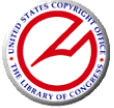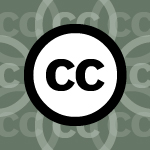        |
|
||||
GlossaryCCUMC: The Consortium of College and University Media Centers. A group of stakeholders who tried to craft Fair Use Guidelines in the 1990's but were unsuccessful. CONFU: Conference on Fair Use. A process that took place during the 1990's where various stakeholders tried to agree on Fair Use Guidelines but were never able to come to an agreement. Negotiations were abandoned. Contributory Liability: It is a type of secondary liability. For a technology provider to be contributorily liable there must be actual infringement occurring, knowledge of that infringement, and material contribution to that infringement. In P2P contexts contributory liability is used to find technology distributors liable because individual users often cannot be located and also might not have the resources to pay large monetary judgments. Copyright Law: This is law that gives owners exclusive rights to distribute, copy, perform, display, and create derivative works. In order to be copyright protected in the US, registration is not necessary. In order the receive protection an item must be original and fixed in the form of a tangible medium. Cracking: The act of breaking into a computer system. Direct Liability: This is legal liability for one's own actions rather than legal liability for the actions of others. DMCA: Digital Millennium Copyright Act of 1998. Made it illegal to circumvent anti-access technological measures. Created a safe harbor for ISPs. Dual Use Technology: A technology that can be used for both legal non-infringing use and illegal infringing use. Fact Pattern: A fact pattern is a scenario or the context or set of events/happenings that are underneath an individual judicial opinion. The fact pattern/scenario supports the holding. Because each fact pattern is individual and specific, holdings from one opinion rarely map on exactly to a future fact pattern. This is why attorneys write briefs: to argue that a previous fact pattern is or is not closely enough related to their current scenario as to set a precedent (or not set a precedent) on what a court should decide. Fair Use: A legal doctrine set forth in Title 17 USC, section 107. Fair use carves a space out of the exclusive rights granted to copyright holders under section 106. To know if a use is "fair" or not, the four factor analysis of section 107 requires that one looks at the amount used, the nature of the use, that portion of the copyrighted material used, and the effect on the copyright holder's potential market. Fair Use Guidelines: Never adopted but appearing in various places on the web in various forms. They tend to circumscribe Fair Use rights. Holdings: The holding(s) of a legal case via a judicial opinion is/are the rule of law that can be derived from the case. A holding is often cited in future cases and contexts as precedent. Contrast this with dicta. Dicta is a general discussion within the judicial opinion which is arguably not something to be cited as precedent, or as a holding, of the case. Dicta is thought of as “irrelevant” and yet is sometimes used to push at the boundaries of a holding, or to imagine an outcome in a different fact pattern. IEFT: The Internet Engineering Task Force. The IEFT was formed in 1986 when the Internet was ARPANET. The IEFT's mission includes making sure the Internet works -- identifying and solving operational and technical problems, managing protocol usage, providing a forum to exchange information about the Internet between various stakeholders. See Kathy Bowrey's (2005) book Law & Internet Culture for more information. Inducement: A doctrine from patent law used by recent courts in copyright cases to define when a provider of dual use distribution/reproduction technology is secondarily liable for the actions of users. It requires culpable intent to cause others to infringe on copyrights. IP: Intellectual Property. Intellectual Property Clause: Article I Section 8 of the US Constitution gives Congress the authority "To promote the progress of science and useful arts, by securing for limited times to authors and inventors the exclusive right to their respective writings and discoveries." ISP: Internet Service Provider. ITU: International Telecommunications Union. Patent Law: This is law that offers protection for ideas -- inventions, methods, or ways of doing things rather than fixed texts/expression (as does copyright). P2P: Peer-to-peer. A type of technology whereby files are exchanged between users rather than being stored and retrieved from a centralized server. Safe Harbor: A concept created by the DMCA that allows ISPs freedom from liability if they quickly take down copyright infringing material after receiving proper notice. Secondary Liability: This is legal liability for the actions of a third party rather than for your own actions. For example, if a defective technology caused copyright infringement, that would be an issue of direct liability. But if a technology caused others to infringe, that would be an issue of secondary liability. Staple Article of Commerce Doctrine: This is a doctrine from patent law which is used in copyright cases. The patent law doctrine states that if something is circulating in commerce as a "staple", even though some aspect of it might infringe on a portion of a patent, this does not cause the thing to be struck down as illegal (i.e., as long as the staple has substantial noninfringing uses it is acceptable even if some part of the staple article might cause infringement). This doctrine was used in Sony to argue that even though the VTR could be used to infringe on some copyrights some of the time, this did not automatically cause the VTR to be illegal because there were substantial noninfringing uses. Title 17 USC.: Title 17 of the United State Code. It's a 300+ page document that contains the 1976 Copyright Act and all of its amendments (including the DMCA). Vicarious Liability: A legal doctrine and type of secondary liability (as opposed to direct liability). Vicarious liability requires two elements to be present -- control and receipt of financial gain. It is one of the two strands of secondary liability. The other strand is contributory liability. |
               |